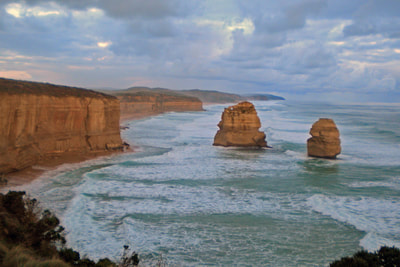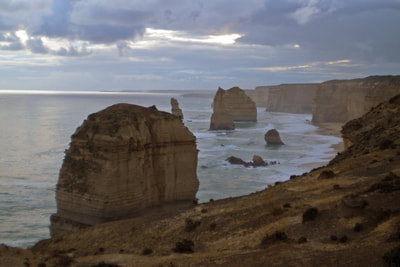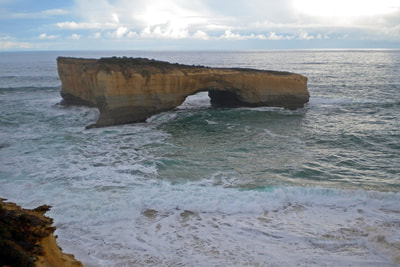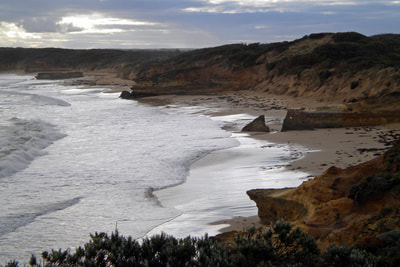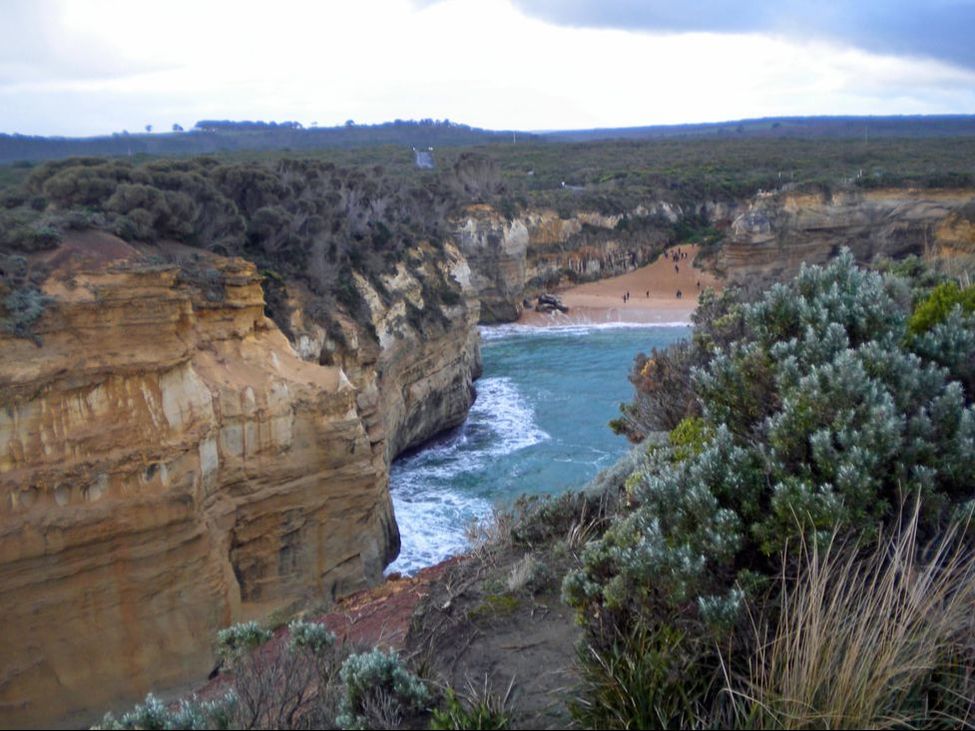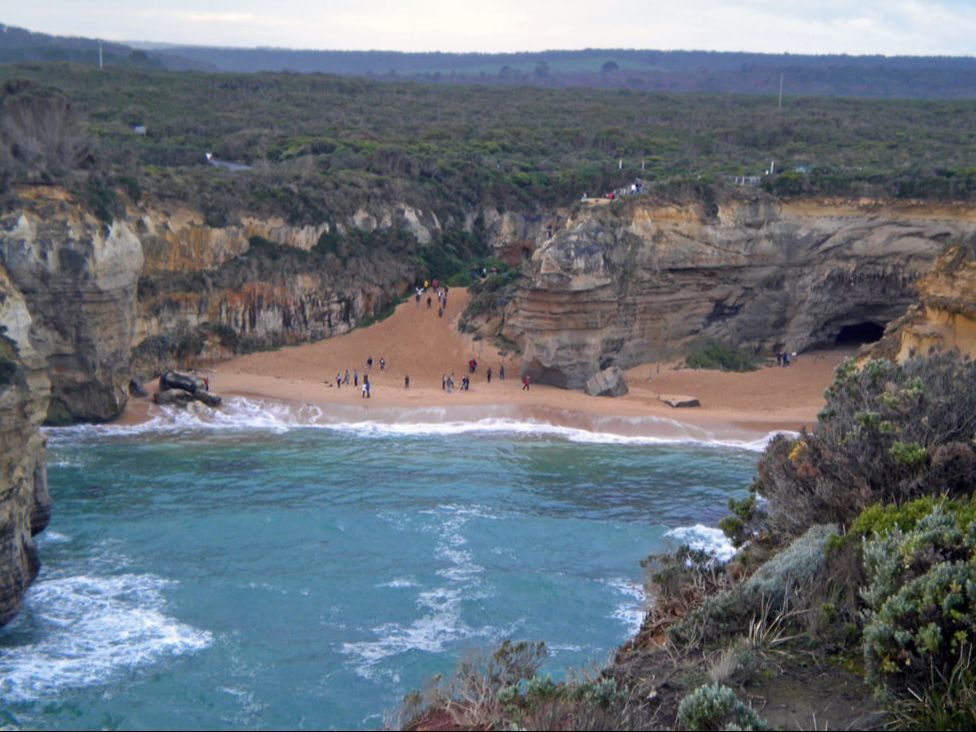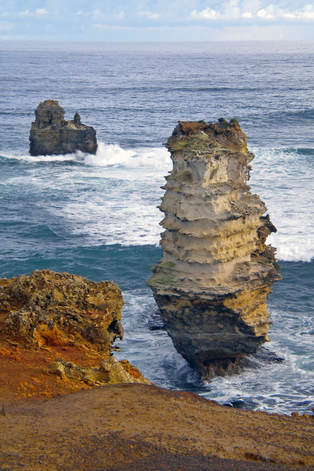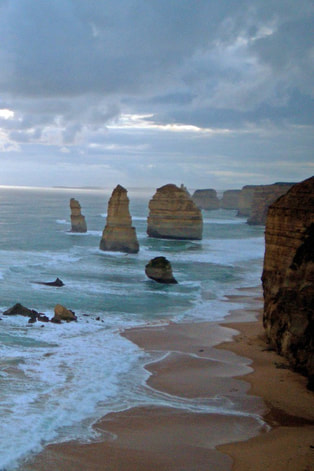Waves cut away at the bases of high tawny cliffs capped by turf and brush. As this shoreline has retreated over millennia, some headlands have been cut off from the shore, leaving huge, isolated towers of stone among the waves and on beaches. Where rock walls have not been completely undercut, there are sea caves and arches.
Dimensions The cliffs and highest stacks rise 160 ft (50 m) above the water, and the stacks furthest out are 1000 ft (300 m) from shore. Water around the stacks is about 30 ft (10 m) deep. The broadest stack top has about the same area as a football field.
Key Details
- Isolated rock towers known as sea stacks are found along many cliff-bound shorelines around the world. Most commonly, sea stacks narrow so much near their tops that they have pointed profiles, leaving nowhere to safely stand on their tops. Here, some of the larger stacks are so broad that they have flat or gently rolling tops, just like the ground near cliff tops on the shore, and capped with the same turf and heath found there. The stacks' isolated patches of meadow, cut off from grazing animals and humans, are regular landing and nesting spots for birds.
- The mainland edge is very irregular, a mix of fairly straight cliff lines facing the sea with waves pounding at their bases, broad arcs of indented cliffs and beach separated by cusp-shaped points, and some very long and narrow headlands and bays. The inland ends of the deep bays host pocket beaches backed by broken cliffs and sea caves.
- It is clear that cliffs on this shoreline continue to erode, about an inch (2 cm) per year on average. A dramatic example of this cumulative erosion was the collapse of a sea stack a decade or two ago.
- Cliff faces where undercut rock has collapsed most recently show relatively flat vertical surfaces, but those merely exposed to the weather for centuries have abundant knobs and ledges, from differing layers of the limestone eroding back in distinctive ways.
- The moderate 30 foot (10 m) depth of sea bed extends some distance out beyond the furthest stacks, as much as a half mile (a kilometer) from shore. This is the zone that was once land, and the sea floor here has only been eroded down here as far as the power of the waves reaches. The submarine wave-cut platform reaches out to the location of the original shoreline, and only beyond this point do ocean depths increase further. There is at least one deeper platform to be found out there, carved by waves at a time of lower sea level, with its own now-fully-submerged landscape of cliffs and stacks.
- Waters near the stacks are sometimes visited by whales, and a small species of penguins nests in sea caves at bases of the cliffs, seen out in the water at night and in early morning hours. Coral reefs are found below the waves here, providing habitat for a great variety of sea creatures.
Story Elements
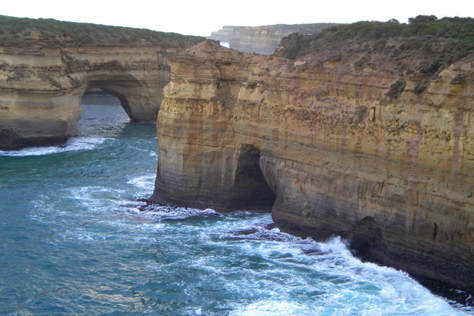
- This complex shoreline offers abundant opportunity for large boats other floating objects to suddenly come into view for a distant observer on the cliffs, or close by for someone on/in the water.
- Low-angle morning or evening light casts this scene's many-angled cliffs in dramatic light and shadow. Warm colors reflected off the limestone contrast with blue and white of the sea surface and sky.
- While winter waves here are often very violent, in calmer seasons local residents might dive in these waters for food or to exploit shipwrecks. The depth of water here aloows practiced snorkelers or free divers to reach the tops of reef mounds.
- Like the stack tops, pocket beaches can be smaller worlds unto themselves, relatively peaceful but hemmed in by cliffs and water.
- If a pocket beach in a bay leads to a stream-cut ravine or other easy ascent route to the cliff tops, then it might be an attractive landing spot for those seeking concealed access to land or sea. Navigating a boat down a long, narrow cleft of a bay to reach this beach may be challenging.
- The rock making up these cliffs and stacks has a fairly rough surface, offering handholds for climbers making a desperate ascent from the sea. However the beginning of a climb from the water or from a boat deck will be very challenging, with waves rapidly changing water levels, spray and complex, violent water currents affected by sea caves and other eroded water-level cavities.
- A refugee from the sea climbs a steep cliff in dark night, and as morning breaks, finds this is the top of a stack, not attached to the mainland.
- A helicopter ride to a broad stack top reveals shiny objects that sea birds have been collecting in their nests, possibly for generations.
- Someone falls asleep in the grass on the mainland, and wakes up in the same grass, but marooned out on top of one of the sea stacks.
- A small craft's perilous run through a sea arch gives temporary escape from a larger pursuing vessel.
Reference Location
The Twelve Apostles area, Great Ocean Road, Victoria, Australia. Make sure to drive on the left!
© Rice-Snows 2017
Proudly powered by Weebly
